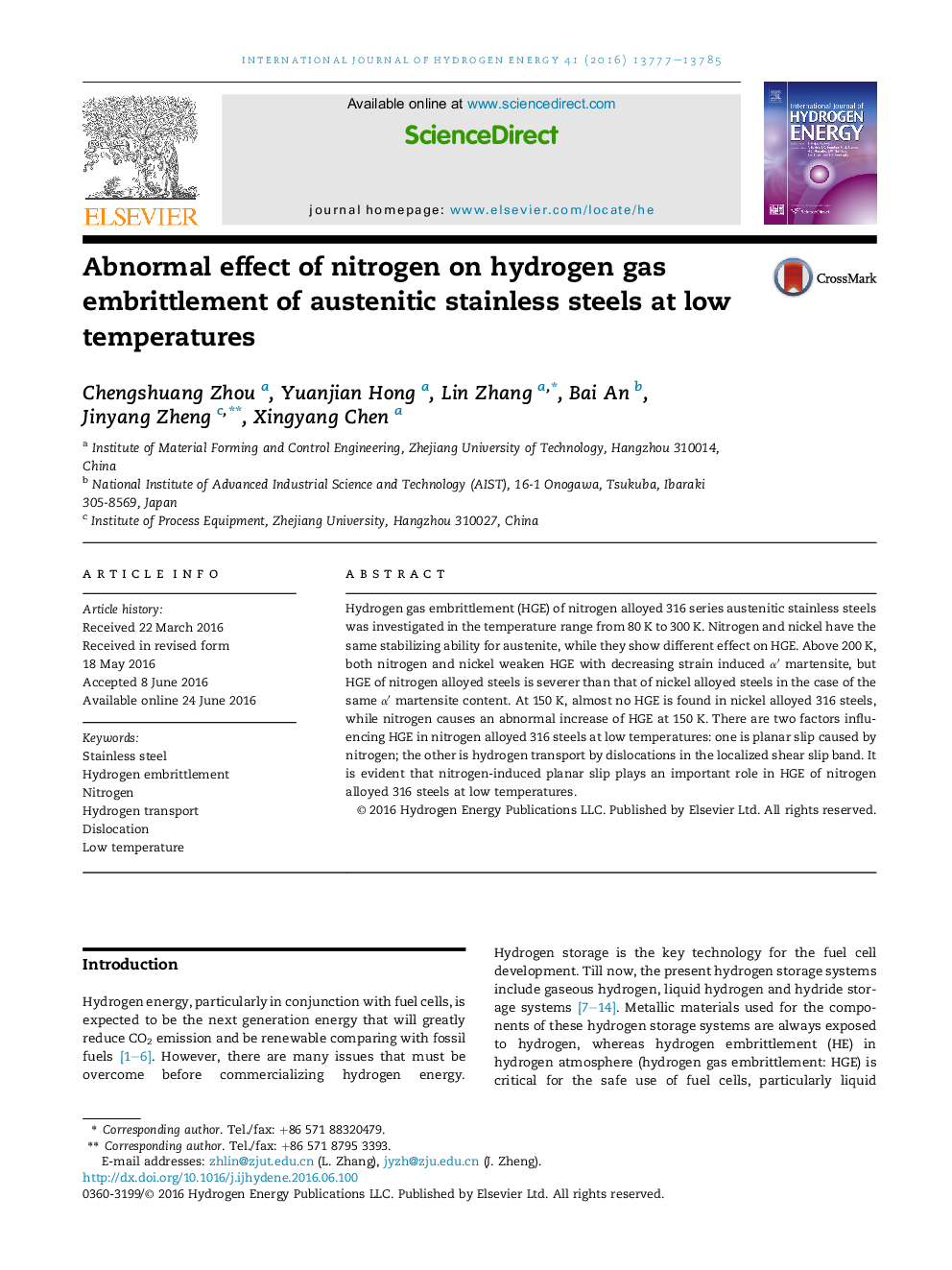| کد مقاله | کد نشریه | سال انتشار | مقاله انگلیسی | نسخه تمام متن |
|---|---|---|---|---|
| 1276492 | 1497394 | 2016 | 9 صفحه PDF | دانلود رایگان |
• Nitrogen causes an abnormal increase of HGE at 150 K.
• Nitrogen greatly promotes planar slip of dislocations at low temperatures (LT).
• Nitrogen-induced planar slip can cause much more severe HGE at LT.
• Hydrogen transport by dislocations can increase H content and cause HGE at LT.
Hydrogen gas embrittlement (HGE) of nitrogen alloyed 316 series austenitic stainless steels was investigated in the temperature range from 80 K to 300 K. Nitrogen and nickel have the same stabilizing ability for austenite, while they show different effect on HGE. Above 200 K, both nitrogen and nickel weaken HGE with decreasing strain induced α′α′ martensite, but HGE of nitrogen alloyed steels is severer than that of nickel alloyed steels in the case of the same α′α′ martensite content. At 150 K, almost no HGE is found in nickel alloyed 316 steels, while nitrogen causes an abnormal increase of HGE at 150 K. There are two factors influencing HGE in nitrogen alloyed 316 steels at low temperatures: one is planar slip caused by nitrogen; the other is hydrogen transport by dislocations in the localized shear slip band. It is evident that nitrogen-induced planar slip plays an important role in HGE of nitrogen alloyed 316 steels at low temperatures.
Journal: International Journal of Hydrogen Energy - Volume 41, Issue 31, 17 August 2016, Pages 13777–13785
